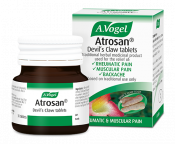Is sitting bad for your health?
If you sit for long periods of time the short answer is yes. Sitting still for long periods of time, even if you have an active lifestyle, can still damage our health. Unfortunately, a bit of exercise throughout the week isn’t enough to compensate for sitting for hours and hours on end. Sitting can result in back pain, circulatory problems and damage to our metabolism. According to one 2016 study, to overcome the effects of sitting for 8 hours a day you must exercise for at least 1 hour daily.1 Sitting essentially puts a pause on your lymphatic system as well as other bodily processes.
Standing desk benefits:

Research has supported the belief that standing desks are great for counteracting health problems like weight gain and brain fog that can crop up from spending too much time seated in a chair. One study found that workers who stood at their desk after eating lunch were better able to regulate their blood sugar levels than workers who came back from lunch and immediately sat down.2
Another recent piece of research observed that standing rather than sitting in front of a computer boosted energy levels and sense of wellbeing. Other studies report that standing desks improve focus, concentration and help to burn 87 more calories a day than seated colleagues.3 In short, standing desks have been scientifically proven to improve blood sugar regulation, energy levels, concentration as well as our mood!
Standing desk drawbacks:
Now, before you jump to standing, standing desks may not offer up all the solutions as previously thought – so what are the drawbacks? It turns out that remaining on your feet for too long comes with its own range of health consequences. Too much standing has been found to compress the spine leading to lower back pain and problems over time. It can also result in circulatory problems like varicose veins and deep vein thrombosis. Other cardiovascular problems can crop up when we’re on our feet for too long because the heart has to work harder and against gravity to keep blood flowing up from the toes.
One of the major drawbacks of standing desks is that they increase the likelihood of developing muscular and skeletal pain. Both standing and sitting compresses the intervertebral discs in the spine. However, in a seated position the lumbar muscles (the muscles or the lower back) are minimally activated as the majority of the workload is passed onto the ligaments and discs.
What’s more, sitting for long periods of time can shorten the hip flexors. Standing after such a long time puts stress on these muscles which can mean that the lower back compensates for their lack of flexibility. This, in turn, can contribute to lower back pain. Prolonged sitting is a major contributor to back pain with around 60% of office workers experiencing the problem.4
Another problem with standing for long periods of time is the development of varicose veins. When we stand for long periods of time blood that flows to the legs has more trouble returning to the heart. This can cause blood pooling, clotting and can result in varicose veins.
What to do if you’re deskbound

Your body was designed to do a whole range of movement – that is not exclusively sitting or standing. Replacing sitting all the time with standing all the time does not assist our physiology, in fact, as we’ve discussed, it can cause its own range of health issues. However, ditching your desk (whether it’s a standing or seated desk) is often not a viable option, so what can we do to minimise the harm done to our health?
Fidget – you heard me – fidget. Whether you’re standing or sitting fidgeting can help to burn more calories each hour than those who remain still standing or sitting.5
Alternate – A study carried out by Stanford University divided a group of participants into two groups – one received access to a work station that could be adjusted to either standing or seated positions and the other group acted as a control group and did not receive such access. After 12 weeks the work station group reported a 55% improvement in back pain and a 60% improvement in ability to concentrate compared with the control group.6 Intervals of standing as well as sitting are thought to be most beneficial for our health.
Clean up your sitting hygiene – Divide your time into optional sitting and non-optional sitting, look at your posture and move more frequently.
Strengthen your muscles and joints – Strengthening your muscles and joints can help to prevent back pain from worsening. A strong core helps to provide the spine with more stability and protects the back from taking excess strain on.
1 https://www.medscape.com/viewarticle/891111
2 http://oem.bmj.com/content/oemed/early/2013/12/02/oemed-2013-101823.full.pdf?keytype=ref&ijkey=fvcEm117fzTcT51
3 https://www.psychologytoday.com/us/blog/the-truth-about-exercise-addiction/201606/standing-desks-dont-actually-burn-more-calories?collection=1091211
4 https://www.medscape.com/viewarticle/891111
5 https://academic.oup.com/ajcn/article/72/6/1451/4729468
6 https://www.medscape.com/viewarticle/891111








